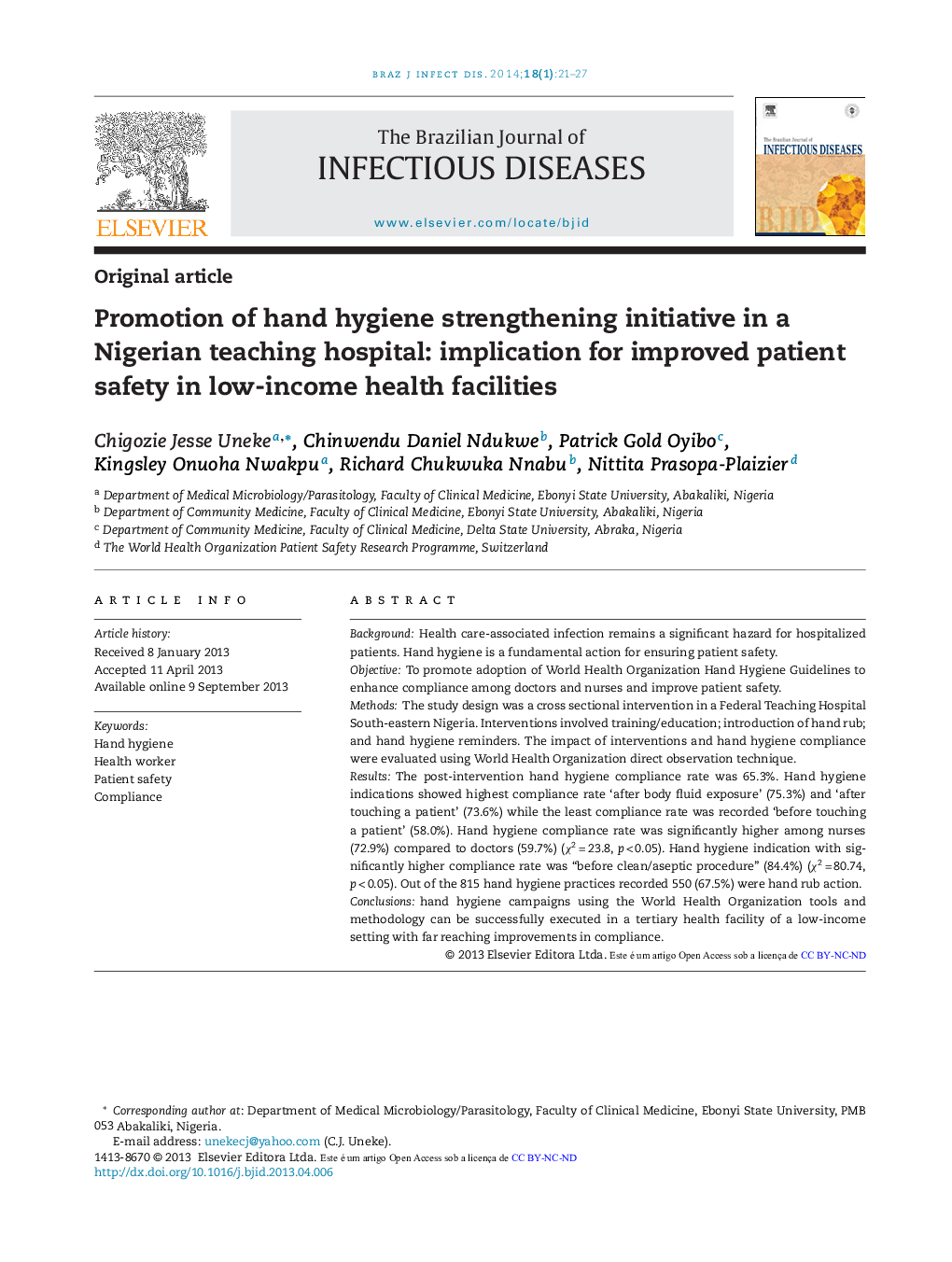| Article ID | Journal | Published Year | Pages | File Type |
|---|---|---|---|---|
| 3343975 | The Brazilian Journal of Infectious Diseases | 2014 | 7 Pages |
BackgroundHealth care-associated infection remains a significant hazard for hospitalized patients. Hand hygiene is a fundamental action for ensuring patient safety.ObjectiveTo promote adoption of World Health Organization Hand Hygiene Guidelines to enhance compliance among doctors and nurses and improve patient safety.MethodsThe study design was a cross sectional intervention in a Federal Teaching Hospital South-eastern Nigeria. Interventions involved training/education; introduction of hand rub; and hand hygiene reminders. The impact of interventions and hand hygiene compliance were evaluated using World Health Organization direct observation technique.ResultsThe post-intervention hand hygiene compliance rate was 65.3%. Hand hygiene indications showed highest compliance rate ‘after body fluid exposure’ (75.3%) and ‘after touching a patient’ (73.6%) while the least compliance rate was recorded ‘before touching a patient’ (58.0%). Hand hygiene compliance rate was significantly higher among nurses (72.9%) compared to doctors (59.7%) (χ2 = 23.8, p < 0.05). Hand hygiene indication with significantly higher compliance rate was “before clean/aseptic procedure” (84.4%) (χ2 = 80.74, p < 0.05). Out of the 815 hand hygiene practices recorded 550 (67.5%) were hand rub action.Conclusionshand hygiene campaigns using the World Health Organization tools and methodology can be successfully executed in a tertiary health facility of a low-income setting with far reaching improvements in compliance.
